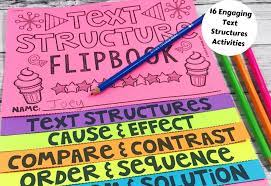Introduction:
In literature and storytelling, foreshadowing is a powerful technique that offers hints or clues to readers about what may happen later in the narrative. By developing their analytical abilities, students can learn to comprehend and appreciate the complexity of texts better. In this article, we present 20 fantastic foreshadowing activities to help students hone their skills.
1. Storyboarding: Allow students to visually map out a storyline while highlighting clues and hints provided by the author. This can be done using drawings, sticky notes, or digital tools.
2. Prediction Journals: Encourage students to keep a prediction journal in which they record their thoughts about potential future events in a story.
3. Spot the Symbol: Discuss symbolism in literature as a precursor to foreshadowing, and task students with identifying symbols associated with future events.
4. Foreshadowing Detectives: Divide students into groups and assign each group a section of text. Groups must analyze their passage for instances of foreshadowing.
5. Weather Watchers: Study how weather elements (rain, storms, sunshine) in fiction stories may be used as foreshadowing techniques.
6. Character Traits Tally: Keep a tally of character traits as they are revealed throughout the story and discuss how these traits might foreshadow future events.
7. Comparison Connections: Compare the use of foreshadowing in different literary works, analyzing how authors employ this tool uniquely.
8. Dialogue Decoder: Analyze conversations between characters for subtle hints about upcoming plot developments.
9. Literary Devices Hunt: Teach students about different literary devices and challenge them to find examples of foreshadowing within other works.
10. Vintage Visions: Study classical literature for examples of foreshadowing, highlighting how this technique has been employed over time.
11. Genre Study: Investigate how foreshadowing techniques vary across different genres, such as mystery, science fiction, and romance.
12. Movie Night: Watch film adaptations of popular novels and discuss the translation of foreshadowing from text to screen.
13. Sequel Pitches: Invite students to create a sequel for a completed story based on its foreshadowing elements.
14. Flashfiction Foreshadowing: Assign students to write flash fiction pieces that incorporate foreshadowing within a limited word count.
15. What If Scenarios: Brainstorm alternative outcomes or endings for a story, considering how different foreshadowing clues might alter these possibilities.
16. Inspirational Images: Provide students with an image and have them write a story incorporating foreshadowing inspired by the image’s elements.
17. Peer Collaboration: In groups, have students compose stories that utilize foreshadowing, critiquing each other’s work.
18. Foreshadowing Revisions: Revise a passage from a story, altering the original foreshadowing to see how changes impact the narrative’s outcome.
19. Mentor Texts: Provide students with works by renowned authors who excel at using foreshadowing and invite them to mirror these techniques in their writing projects.
20.Reflect and Review: Finish your study of foreshadowing by having students review their progress and reflect on which activities they found most effective in strengthening their analytical abilities.
Conclusion:
Foreshadowing is an essential literary device for engaging readers in any narrative context. By exploring diverse ways to strengthen students’ understanding of this technique, teachers can nurture their learners’ appreciation for literature and enhance their critical thinking skills. These 20 activities provide stimulating starting points for developing the analytical abilities of today’s budding scholars.











